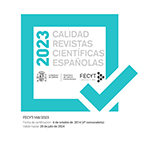Delito y pecado. La transgresión en femenino
Resumen
Qué se entiende por delito y qué es lo que se considera pecado, por qué cosas nos sentimos culpables, cuáles son las aspiraciones que nos parece legítimo defender, y qué estrategias utilizamos para tratar de salir adelante ante las dificultades, son todas vivencias condicionadas por los modelos de género. Éste artículo trata de cómo las mujeres viven las normas y cómo son evaluadas cuando las incumplen, de qué clase de riesgos consideran prioritario defenderse, qué estigmatizaciones se resignan a aceptar y qué recursos utilizan para esquivar lo que consideran las peores posibilidades. Aunque las mujeres son las más pobres en cada sociedad y las que asumen mayor cantidad de responsabilidades, cometen muy pocos de los delitos asociados a necesidades económicas. Evitan delinquir desarrollando estrategias alternativas que van desde la construcción de redes de apoyo, al trabajo sumergido y el trabajo sexual, entre otras. La prisión representa para ellas un problema mayor que para los hombres, en la medida en que rompe sus vínculos familiares y las aleja de lo que viven como sus deberes de cuidado. Así las mujeres eligen, dentro de las opciones de que disponen, las soluciones que les parecen mejores, o menos malas. Esta estrategia del mal menor no siempre lleva a buen puerto.Descargas
Descarga artículo
Licencia
La revista Política y Sociedad, para fomentar el intercambio global del conocimiento, facilita el acceso sin restricciones a sus contenidos desde el momento de su publicación en la presente edición electrónica, y por eso es una revista de acceso abierto. Los originales publicados en esta revista son propiedad de la Universidad Complutense de Madrid y es obligatorio citar su procedencia en cualquier reproducción total o parcial. Todos los contenidos se distribuyen bajo una licencia de uso y distribución Creative Commons Reconocimiento 4.0 (CC BY 4.0). Esta circunstancia ha de hacerse constar expresamente de esta forma cuando sea necesario. Puede consultar la versión informativa y el texto legal de la licencia.











